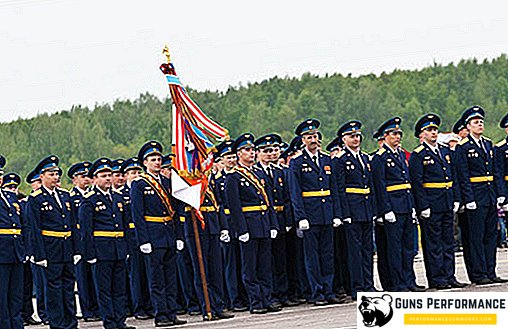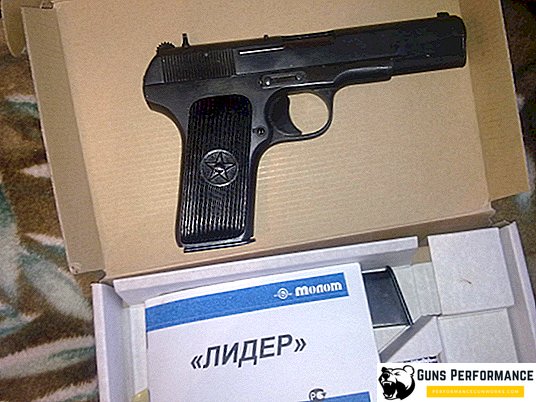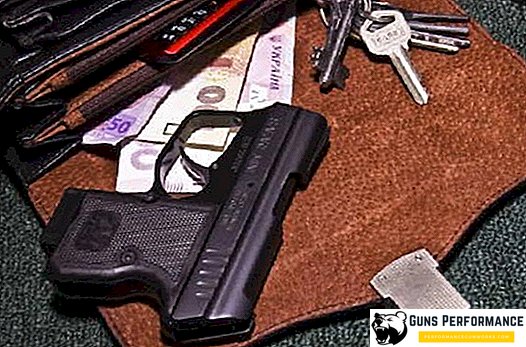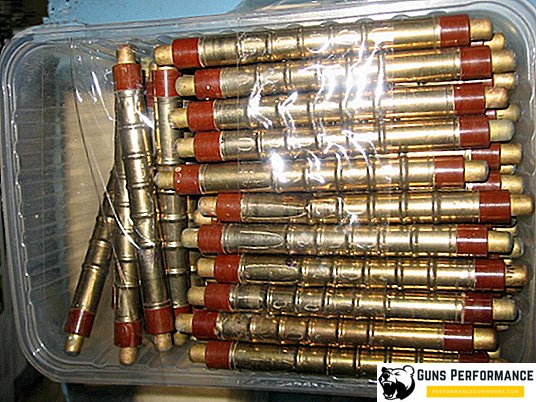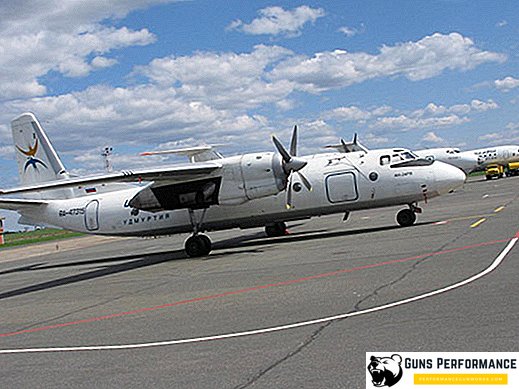The Russian fleet has long felt the need for ships capable of operating effectively in the coastal sea zone and keeping intact the maritime borders of our country. The transition from the concept of the Great Ocean Fleet during the Cold War to the idea of a modern fleet equipped with universal warships initiated the development and construction of small warships. The need for a multipurpose warship to operate in the internal waters was recognized in the highest naval echelons for a long time. The patrol ships of the old Soviet building could only partially fill the gap. In terms of their tactical and technical characteristics, such ships no longer meet the assigned tasks.
The domestic fleet needed an entirely new type of guard ship that could effectively patrol the economic sea zone and, if necessary, deliver a crushing blow to the enemy. The solution of the problem could be the ships of the project 22800 of the Karakurt type, however, according to their tactical and technical data, they were more of a strike type and were much more expensive to build and provide. Another technical solution was required, and it was soon found. In the depths of the Northern PKB project 22160 was developed, which involved the construction of a modern patrol ship.

The birth of the project Corvette 22160
The protection of territorial waters and the 200-mile economic zone was the primary function assigned to new ships. In addition, their tactical tasks included non-specific functions:
- fight against smuggling in territorial waters;
- fighting poaching and illegal fishing in the 200-mile economic zone;
- rescue operations at sea;
- protection and maintenance of vessels;
- protection of port complexes and naval bases.
To use for these purposes rocket ships of the Karakurt project is the same as waving a sledgehammer in pursuit of a mosquito. The new patrol ship of the project 22160 was supposed to have a small size, small displacement and a complex of weapons, corresponding to the goals and objectives.

Initially, a new corvette was created for the needs of the Frontier Service of the FSB of Russia, but already at the design stage, the Naval leadership saw in the design the features of the future patrol. New ships have a relatively small displacement (1300 tons). The maximum travel speed of the corvette should not be below 30 knots. Somewhat surprised designers demanded range in the technical specifications. The ship, conceived for patrolling coastal waters, was supposed to have autonomy up to 60 days and a cruising range of 6 thousand miles.
The crew of the patrol ship has 80 people. As for the standard weapons, then the designers had to choose between two concepts. At first, the technical task set the condition for installing short-range weapons on the ship, including short-range anti-ship missiles, artillery and anti-aircraft missiles. In the future, having received the finished experience of successful use on ships of small displacement of cruise missiles "Caliber", they decided to equip the new corvette with a similar launcher.

The result was a coastal patrol ship with a huge cruising range and tremendous firepower for the ships of this class.
"Vasily Bykov": lead ship of the project 22160
According to its tactical and technical data, the Corvette of Project 22160 was the first ship in its class capable of successfully resisting almost any potential adversary. In terms of the power of weapons and the autonomy of sailing, military experts often compared the Russian corvette with the legendary David, with one blow from the sling, defeating the giant Goliath.

The construction of new ships was entrusted to Zelenodolsk shipyard, which traditionally builds small military ships for the Russian fleet. The lead ship of the project 22160 - the corvette "Vasily Bykov" - was laid in February 2014. In the course of construction, shipbuilders managed to find a way out of an unforeseen situation, effectively solving the problem of import substitution. To equip the ship, mainly parts, components and assemblies of domestic production are used, including modern radar and navigation equipment. Launching of the ship into the water is planned in 2018, after which the docking works, mooring trials and driving to the Black Sea will begin. A new ship is planned to be attributed to the Novorossiysk naval base.
Following the lead vessel with a frequency of 5-6 months, 6 more vessels of this class were laid. The first serial ship "Dmitry Rogachev" was laid at the same Zelenodolsk shipyard, but the second and third serial ships were decided to be built at the Kerch GCC "Zaliv". In February 2018, the second serial ship of the project 22160 “Mikhail Derzhavin” was laid, and four months later, in May, they laid one more ship of this class. Black Sea corvettes are somewhat different from their predecessors. Slightly increased the length of the vessel and accordingly increased its firepower. The displacement of corvettes being built in the Crimea will be slightly larger than the design. They and the other two vessels, built at the shipyard in Zelenodolsk, should be part of the Black Sea Fleet. The deadline is 2020.
Design features of the project 22160
The main and distinctive feature that distinguishes the design of new ships of the project 22160, is their modular layout. This method of building combat ships is being tested on the construction of new patrol ships for the first time in Russia. Due to the fact that the main part of components and assemblies, including weapons, are of the same type on ships, they are assembled and installed directly at the vessel’s construction site. The versatility of the design of ships lies in the fact that the composition of the weapons of a combat ship may change already in the process of operation.
The hull of the ship and the architecture of the superstructures are created using Stealth technology, which significantly reduces the ship’s radar visibility. The sides of the vessel have high reverse blockages, reducing rolling. In size, the superstructure on the ships of project 22160 is two times smaller than that of the Stereguschy class frigates. The upper deck and extensive deck spaces are protected by composite materials with low reflective properties. Even the nasal gun mount has an angular turret with a minimum area of reflecting surface.
The power plant of the corvettes of mass production was manufactured at the Kolomna Engine-Building Plant. The power of two reverse-gear diesel engines is 12 thousand hp. All units and assemblies of the motor group are the brainchild of domestic factories. In the assembly of the power plant used a set of equipment of the plant "Star" and the control system of the concern "Aurora".

It should be noted that on the lead ship of the corvette "Vasily Bykov" are the engines of the German company MAN.
The quality of the motor group, universal hull lines and the presence of excellent navigation equipment provide the new corvettes with good seaworthiness. The designers and builders managed to put into practice the autonomy of 60 days stated in the technical specifications. New corvettes in fact can cover huge distances and be at sea for up to two months. None of the Russian Navy watchdog can boast of such indicators.
All ships are equipped with a universal ship armament control system. The main strike armament of the corvettes of Project 22160 is the Caliber-NK multi-purpose cruise missiles deployed in launchers in the stern of the ship. Such weapons make a small ship a serious adversary even for connecting the ships of the naval forces of the NATO countries, plying in the waters adjacent to the territorial waters.

If necessary, 3M54E cruise missiles can be converted from tactical weapons into strategic deterrence capable of carrying nuclear warheads.
To date, not a single corvette in the world has weapons that are comparable in strength to the firepower of a ship of this project. Corvettes 22160 of the project have a draft of 4 meters, which allows them to operate freely not only on the maritime theater, but also to enter the sea bays and act on the river fairways.
The air defense system of the ships is represented by 12 channel anti-aircraft missiles "Shtil-1", which is equipped with 24 9M317E missiles. To create airborne near-line on the corvettes are set complex "Bending". The artillery armament of the ship is represented by a 57-mm A220M artillery mount.
Together with powerful strike and defensive weapons, new ships are equipped with sophisticated sonar and radar equipment. The Corvette has three hydroacoustic stations capable of conducting underwater and surface monitoring of the surrounding water area at a distance of 3-5, 5-12 and 35-140 km, respectively.
On the ship for the first time, a hydroacoustic system for detecting scuba divers "Pallas" was installed, capable of detecting underwater saboteurs at a distance of up to half a kilometer.

Following the corvette "Pavel Derzhavin" at the shipyard in Kerch today the third serial patrol ship of the project 22160 "Sergey Kotov" is being built. Both ships can enter service next year. Together with their elder brothers, the corvettes Vasily Bykov and Dmitry Rogachev, they are able to create an effective strike grouping of patrol vessels on the Black Sea. Ships of this class will be able to completely neutralize the forces of the Turkish Navy in the Black Sea Maritime Theater. The last sixth ship so far exists only in the drawings. Information about where and when the last serial ship will be laid is not received from the highest echelons of the Ministry of Defense.



